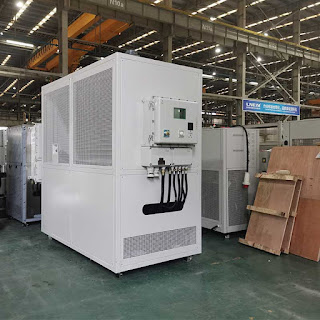Laboratory refrigerated and heating circulators is a kind of equipment that can provide cooling and heating fluid temperature control. It uses different media to circulate high temperature and low temperature in the pipeline system. The heat release or heat absorption will be circulated to the reactor jacket through the circulation pump. Inside, the cycle is carried out, so that the matching reactor can meet the required temperature requirements.
Laboratory refrigerated and heating circulators are mainly used in combination with double-layer glass reactors, which can provide a circulation device with heat source and cold source. It has a wide range of work and is used in pharmaceutical, chemical, biochemical, biological and other industries. It is a reactor, A heat source such as a storage tank is provided, and a cold source can also be used to heat and cool other equipment.
Laboratory refrigerated and heating circulators can be equipped with various types of reaction kettles, reaction tanks, and stirring tanks for refrigeration and heating temperature control, and can be equipped with distillation, extraction, etc. for high and low temperature and ultra-low temperature control to achieve the effect of separation. In addition to the pharmaceutical and chemical industries, our company can also conduct high and low temperature tests for high and low temperature performance capabilities for the material testing industry, components and semiconductor industries, etc.; it can also perform high and low temperature tests for batteries and motors in the new energy industry.
Different models and temperatures of laboratory refrigerated and heating circulators use different media, including heat transfer oil, water, and ethylene glycol aqueous solution. The equipment is similar to the mold temperature controllers, high and low temperature all-in-one machines, and all-in-one cooling and heating machines on the market, but the functions, configurations, and parameters of each manufacturer are different.
Laboratory refrigerated and heating circulators now adopt PID intelligent temperature control technology, which can be heated, constant temperature or cooled. The current temperature control requirement can reach ±0.5°C. The equipment adopts multi-point temperature control technology, and the pipeline and electrical parts can be isolated and explosion-proof. , the temperature range is relatively large, and the temperature rise and fall are relatively uniform and stable.
Laboratory refrigerated and heating circulators require manufacturers to design and customize technical solutions. If the configuration is too low, it will be difficult to achieve the required hot and cold temperatures. If the configuration is too high, it will cause excessive power, causing unnecessary waste and increasing operating costs.
.png)




No comments:
Post a Comment